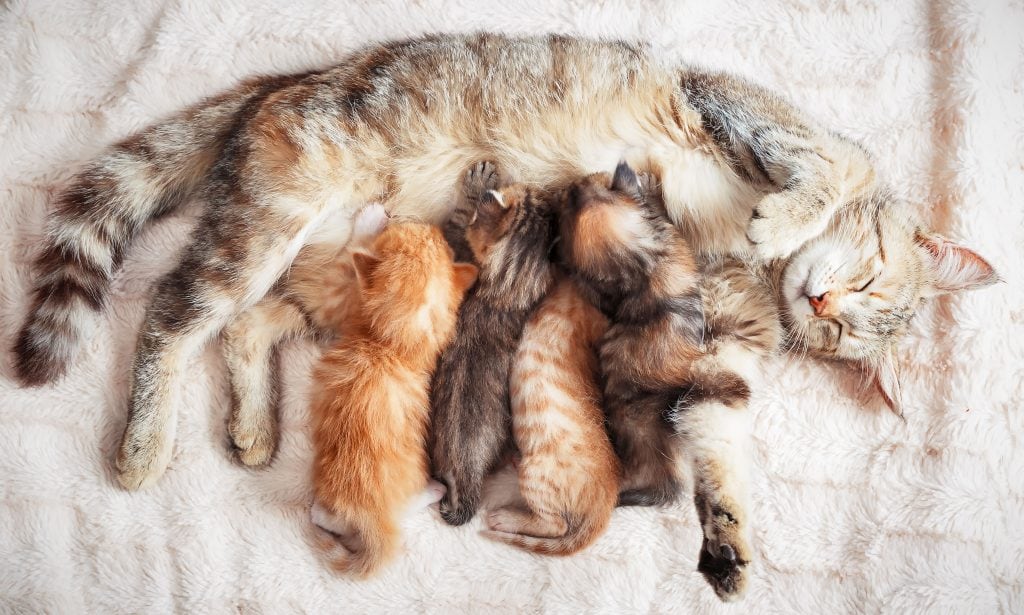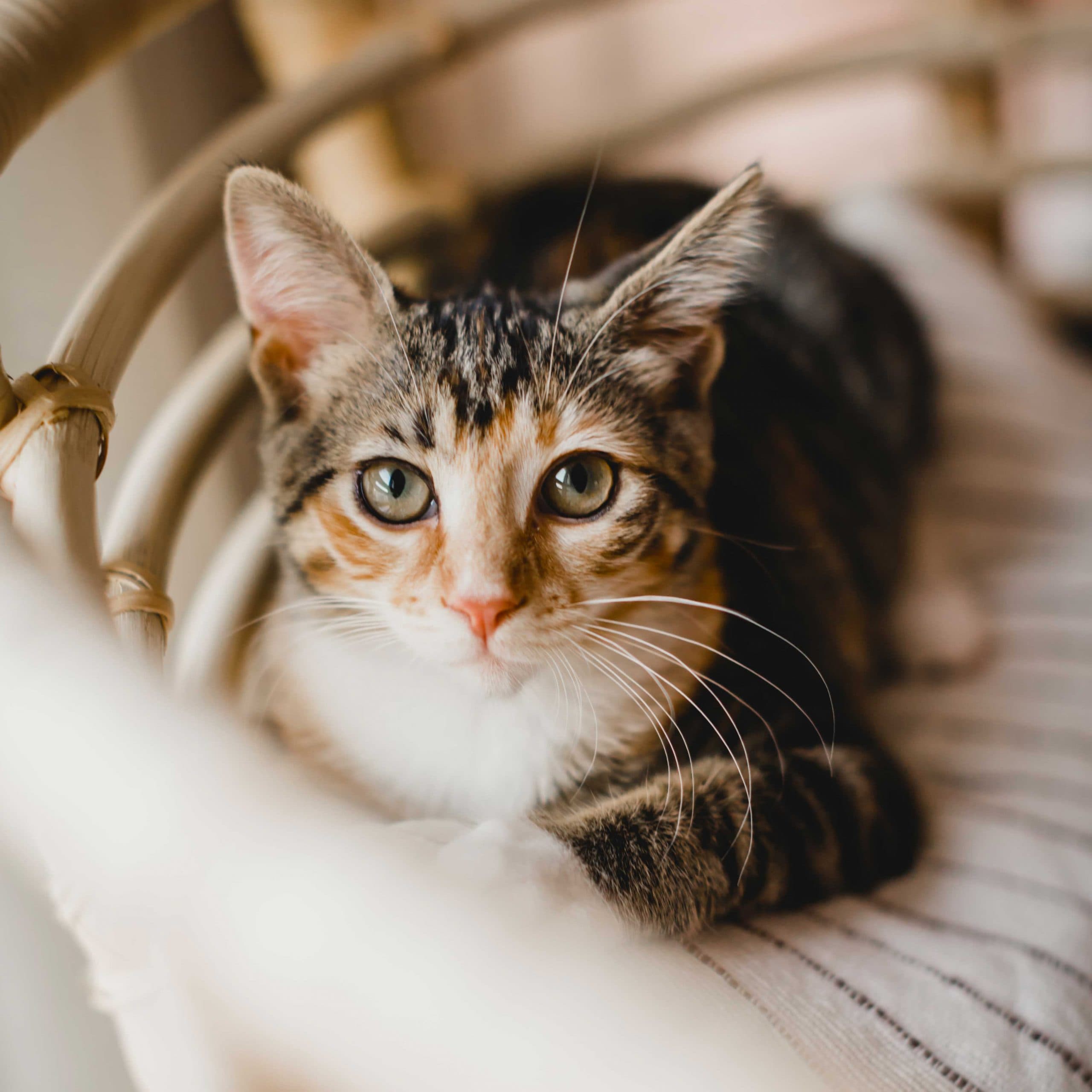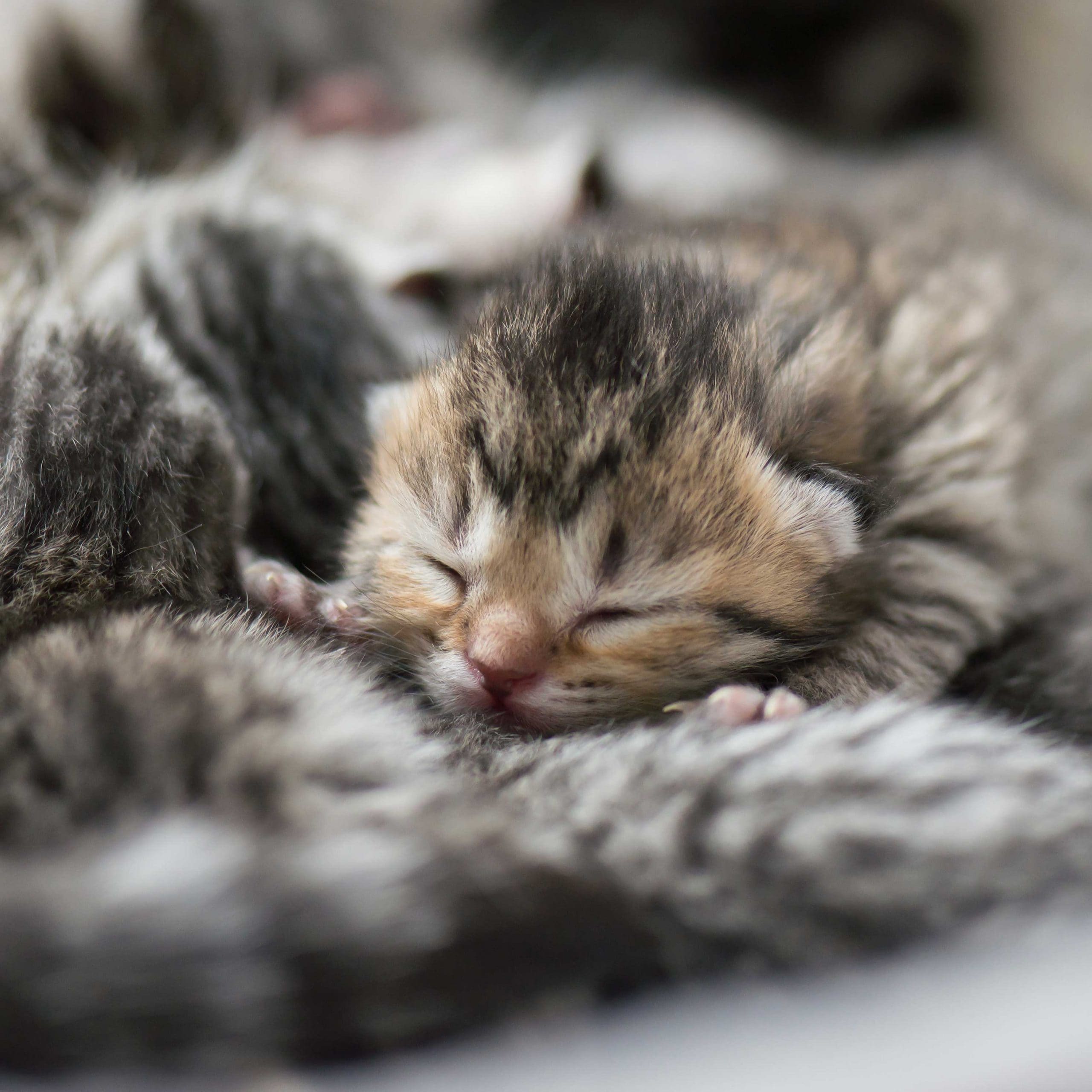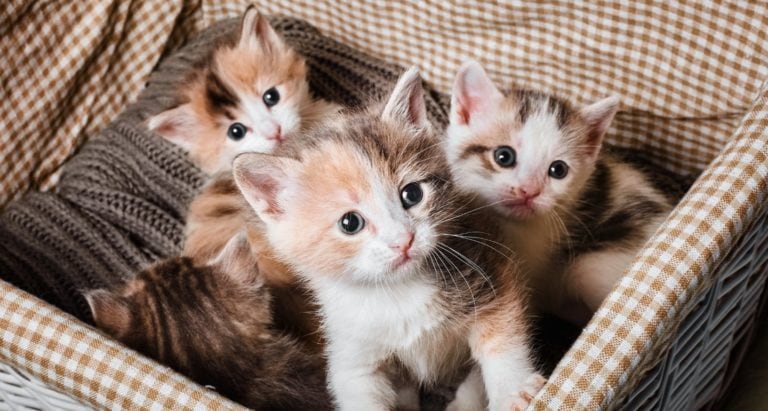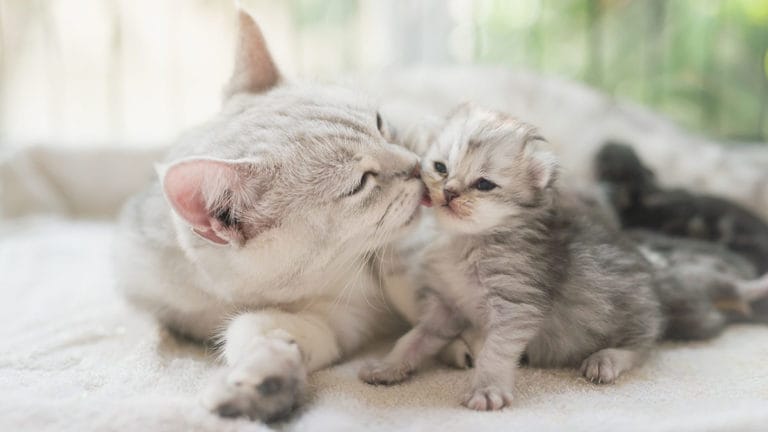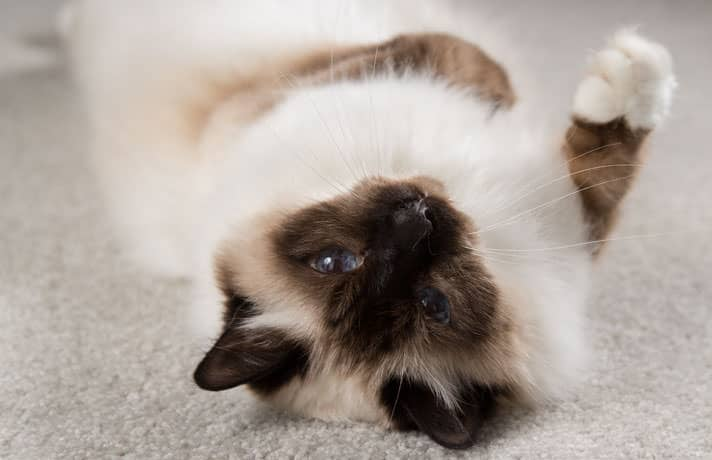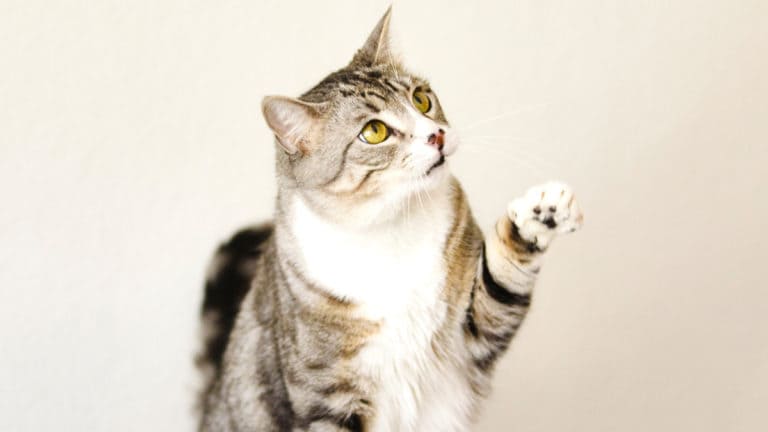A mother cat tenderly nursing her tiny kittens is a heartwarming sight to see. But have you ever wondered whether it’s possible for the mother cat to get pregnant again while nursing?
Yes! A cat can indeed get pregnant while still nursing her young.
But how does this happen? How can you tell if the mother cat is pregnant again? How soon can a cat get pregnant after giving birth? We spoke to a vet expert for answers to these questions— and more.
How Can a Cat Become Pregnant While Nursing?
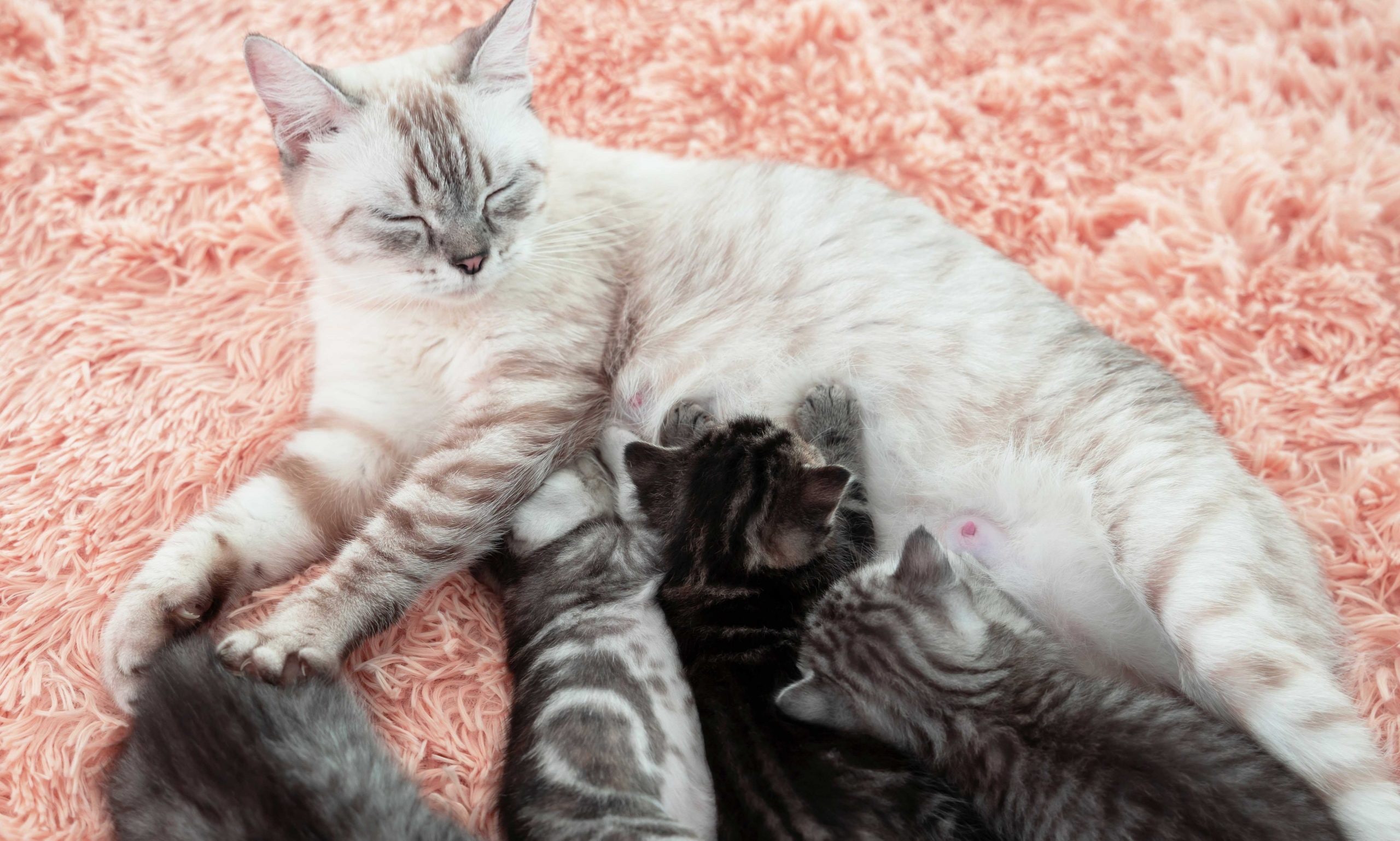
When a cat is “in heat” (aka estrus), it means she’s in the fertile period of her reproductive cycle and is receptive to mating. Cats can go into heat several times during their breeding season, which typically runs from early spring to late fall.
Lactation (aka nursing) does not prevent a heat cycle, so a female cat might go into heat while she’s still nursing her young. If she mates during this time, she might become pregnant again.
There are, however, some natural mechanisms in place to decrease the likelihood of pregnancy while nursing. When a cat is nursing, the hormone prolactin is released, which suppresses ovulation. This makes it less likely for the mother cat to become pregnant again, explains Stephanie Wolf, DVM, a veterinarian with The Vets in Charlotte, NC.
Major caveat: The effectiveness of this suppression varies among cats, and some may still ovulate, opening the door to another pregnancy if mating occurs.
How Soon Can a Cat Get Pregnant After Giving Birth?
If she mates during this cycle, there’s a possibility she could become pregnant again, just a few weeks after the birth of her previous litter of kittens.
However, just because a nursing cat can get pregnant again, doesn’t mean that’s what’s best for her. Ideally, a nursing cat should wait a few months before becoming pregnant again to allow her body to recover from the previous pregnancy, birth and nursing period.
How Common Is It for a Cat to Get Pregnant While Nursing?
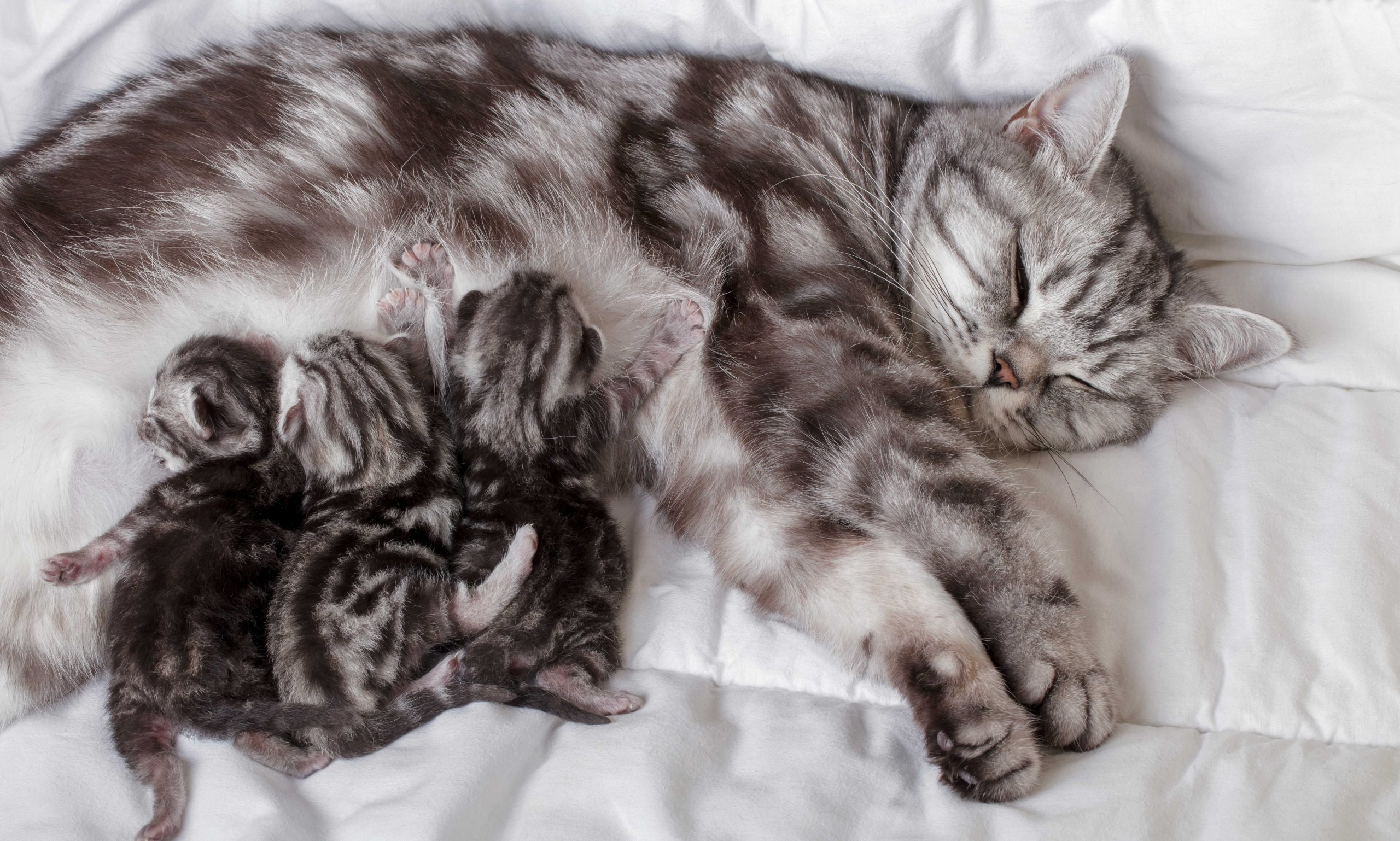
That said, it’s certainly possible, especially if she has access to an unneutered male cat.
It’s recommended to keep your female cat away from male cats while nursing and spay her as soon as her kittens are weaned, which is typically around 4-6 weeks post-birth. Spaying, which is the only form of birth control for cats, refers to sterilization by removing the ovaries.
It’s important to spay the mama cat after her kittens are weaned, as getting pregnant while nursing can be hard on the mama cat’s body. It may also result in her not having enough resources to provide sufficient care for all of her kittens.
On top of that, it's crucial to consider the millions of already-existing cats across the country who are in need of homes and not contribute to increasing their numbers.
How Many Times Can a Cat Get Pregnant in a Year?
How often can a cat have kittens? Well, a typical cat pregnancy lasts about nine weeks, making it possible for a female cat to birth as many as three litters per year, each of which can yield between one and ten kittens.
Again, as responsible cat guardians, it’s vital to do our part to prevent unwanted pregnancies.
How Can You Tell If a Nursing Cat Is Pregnant Again?
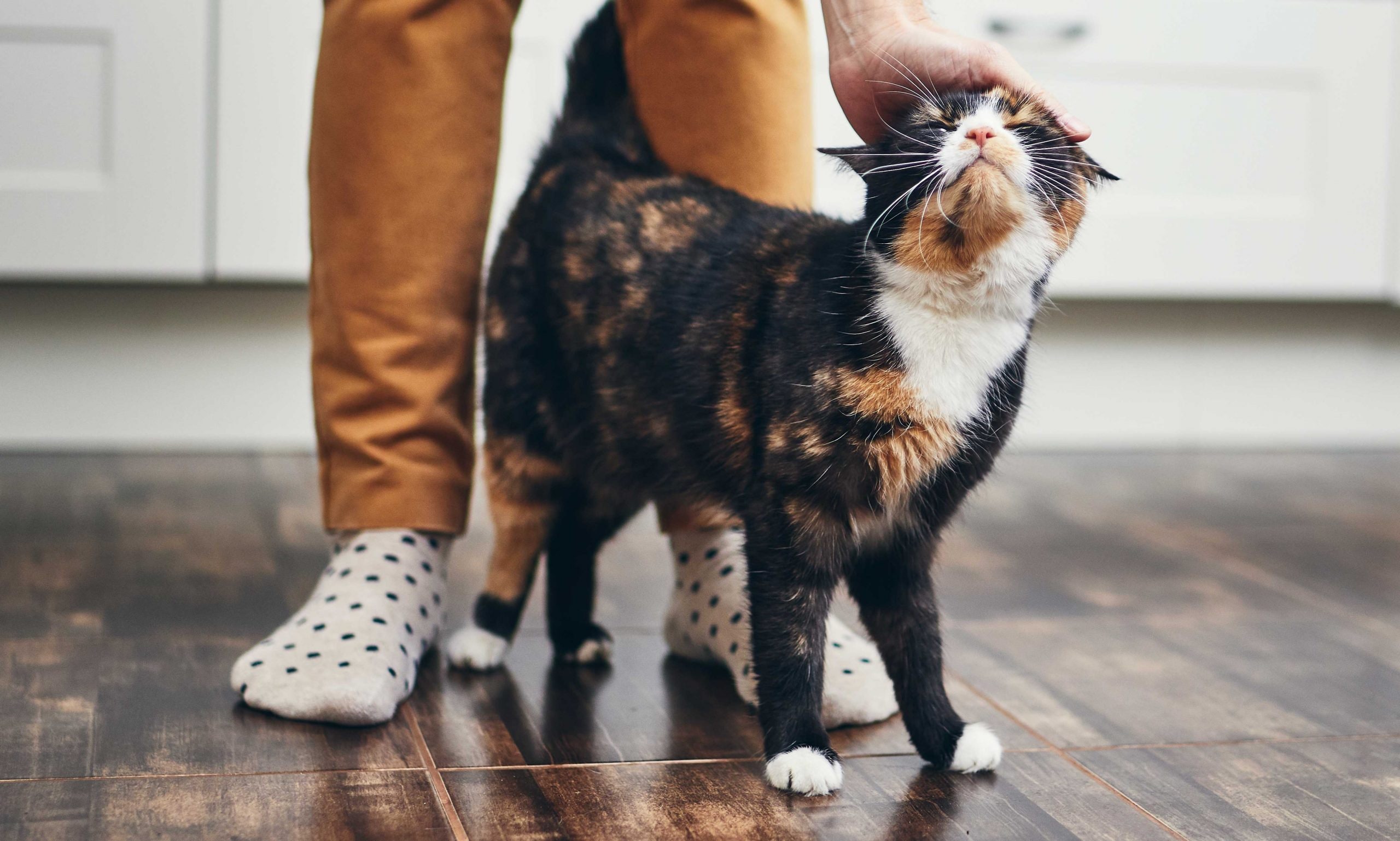
Dr. Wolf shares a few indicators that may suggest pregnancy:
- Changes in behavior: A pregnant cat may become more affectionate or more withdrawn.
- Swollen abdomen: As the pregnancy progresses, the belly of a pregnant cat will begin to grow and become more swollen. This can be mistaken as general weight gain.
- Changes in appetite: A pregnant cat may experience changes in her appetite, either eating more or less than usual.
- Nipple changes: The nipples of a pregnant cat may become more enlarged and pink as the pregnancy progresses.
- Nesting behavior: A pregnant cat may begin to create a nest or seek out a comfortable spot to give birth.
Are There Pregnancy Tests for Cats?

If you suspect your cat may be pregnant again, take her to a veterinarian for confirmation.
According to Dr. Wolf, there are three methods a veterinarian can use to check for pregnancy, including:
- X-rays: This is the most common method and can be done as early as 40 days into the pregnancy, although some veterinarians recommend waiting until 45-55 days for increased safety and accuracy. X-rays will show the developing bones of the kittens.
- Ultrasound: The usefulness of this test depends on the veterinarian’s skill. Some can identify fetal heartbeats as early as 15-17 days of pregnancy and fetal movement at 28 days. False positives are common due to gas and food in the gut obscuring the view of the uterus.
- Blood testing: There are two hormonal blood tests that can detect pregnancy with 95 percent accuracy after 29 days of pregnancy. These tests are typically only done by veterinarians who frequently work with experienced cat breeders.
Can Female Cats Produce Milk for Other Kittens?
Known as “allosuckling,” this behavior is often observed among related female cats such as sisters or mother-daughter pairs that give birth around the same time.
While allosuckling can be beneficial in certain circumstances, it’s essential to monitor the health and well-being of the mother and kittens involved. If a mother cat is nursing too many kittens, she may become exhausted, malnourished or unable to produce enough milk for all of them. In such cases, human intervention may be necessary to ensure the health of both the mother cat and the kittens.
Being informed about the reproductive lives of our feline companions enables us to better cater to their needs, ensuring a healthy and happy life for mother cats, their kittens and the cat population at large.
To learn more about preventing unwanted cat pregnancies, take a look at how to spay or neuter your kitten or adult cat.
More about cats in heat:
Share:
